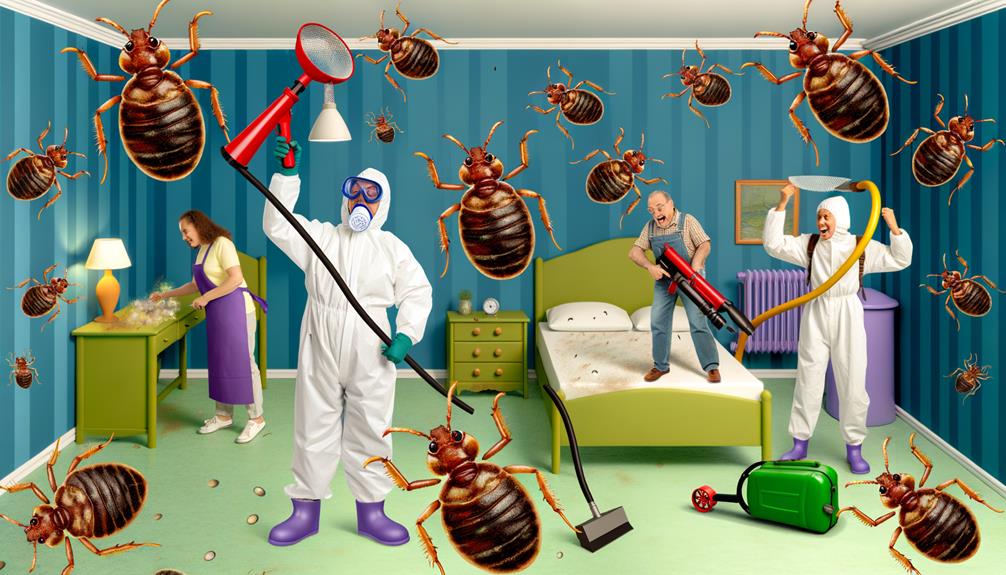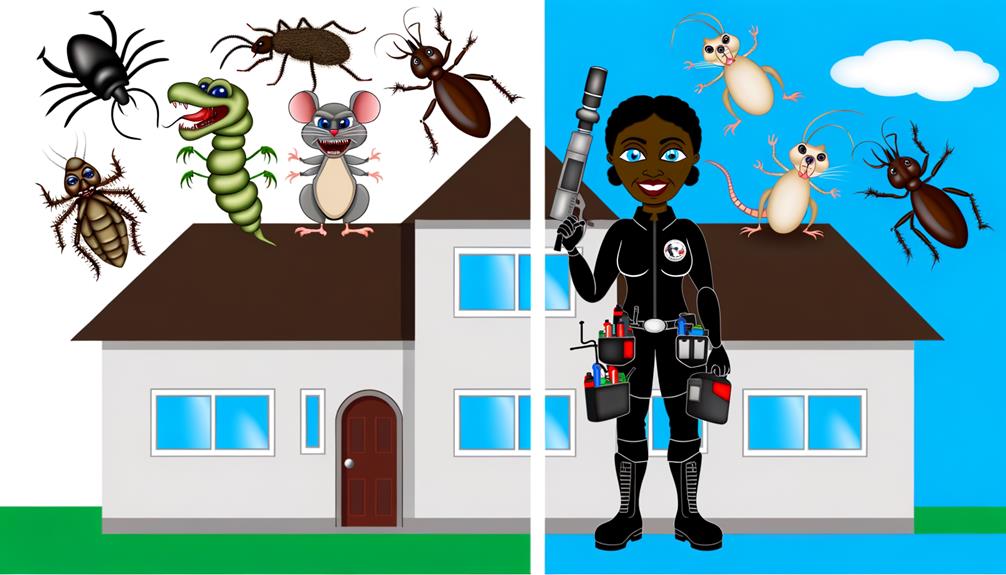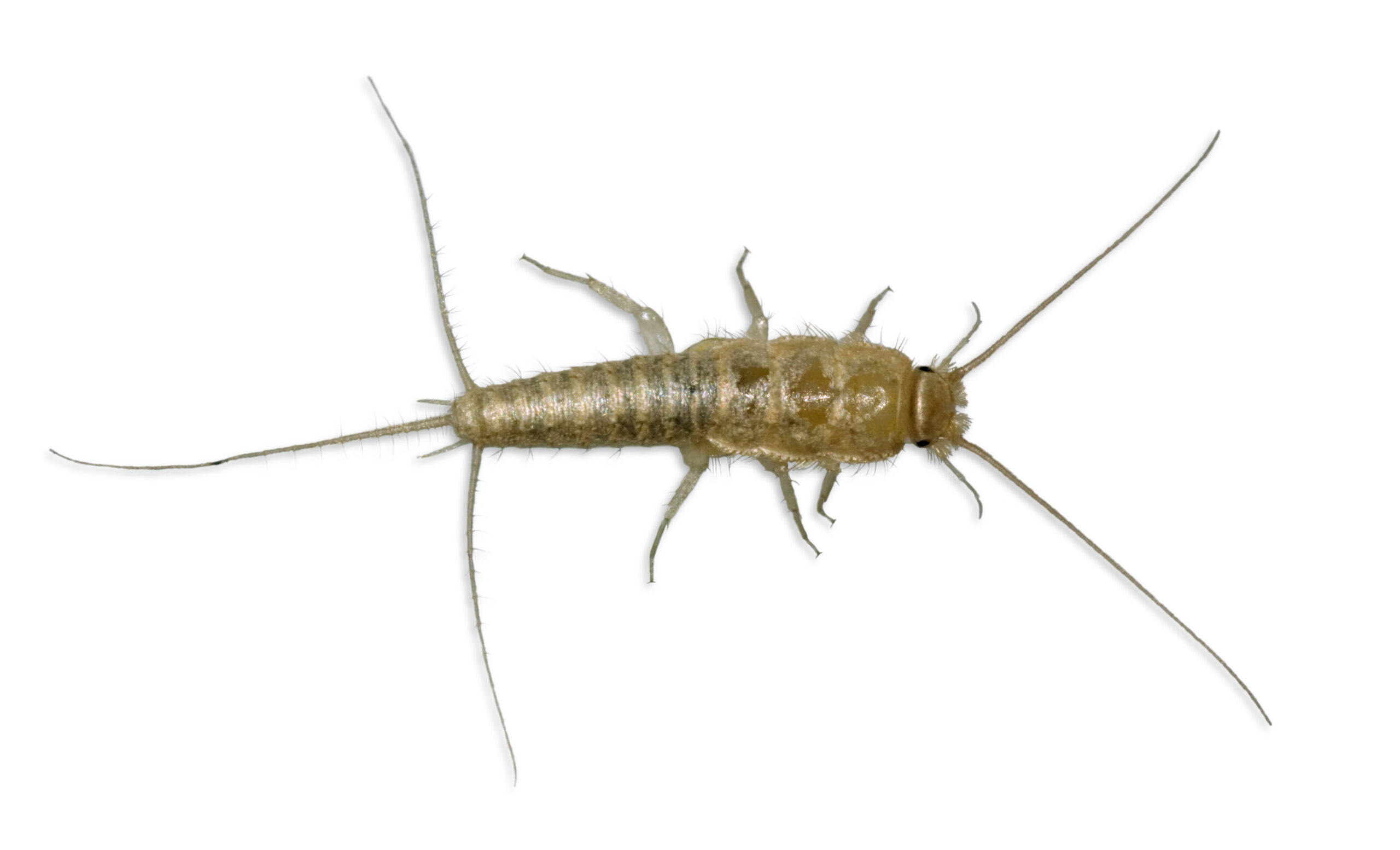Preventing bed bugs early on is crucial. Ignoring signs can turn a minor issue into a major nightmare. DIY treatments often fail and can make things worse. Avoid misusing pesticides or spreading the infestation inadvertently. Professional help may be the best solution.
Key Takeaways
- Avoid DIY heat treatments without proper knowledge and tools due to fire risks and inefficacy.
- Do not misuse pesticides as they can worsen the infestation and pose health hazards.
- Refrain from ignoring early signs of infestation to prevent widespread issues.
- Eschew handling infestations alone; professional help ensures thorough eradication and safety.
Ignoring Early Signs of Bed Bugs

Ignoring the early signs of a bed bug infestation can lead to a complex and widespread issue that’s much harder to control. This crucial stage, often marked by subtle cues, requires your keen attention. The common sign symptom of misunderstanding is your first obstacle. You might mistake bed bug bites for those of other insects, dismissing them as minor irritations. However, these bites, often appearing in a line or cluster, are telltale signs, signalling the early stages of invasion.
Moreover, the Initial infestation underestimation significantly hampers effective control measures. You might notice small blood stains on your sheets or tiny, dark specks on your mattress, which are bed bug excrement. These signs, though seemingly insignificant, indicate a growing problem. Ignoring or misinterpreting these clues not only worsens your infestation but also undermines the sense of safety and belonging in your own home.
Thus, it’s imperative to adopt a scientific and analytical approach towards identifying these early signs. Recognizing and acknowledging the initial warning signals can steer you towards timely and effective interventions, preventing the infestation from taking a stronghold in your living space.
DIY Bed Bugs Heat Treatments
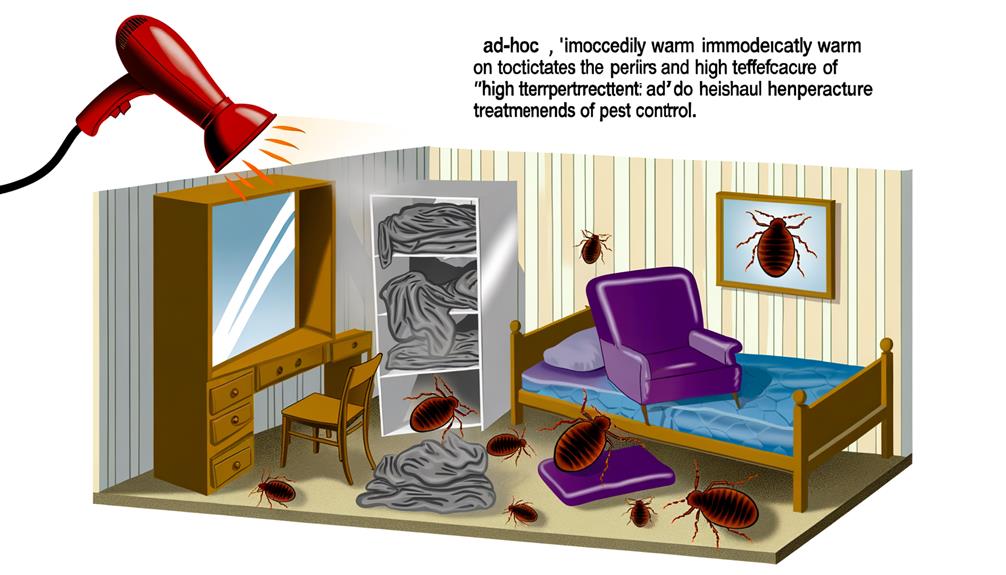
After acknowledging the early signs of bed bug infestation, you might be tempted to attempt DIY heat treatments, a method that requires meticulous execution and an understanding of thermal dynamics to ensure effectiveness. This technique, while seemingly straightforward, involves elevating room temperatures to at least 120°F for several hours, a threshold scientifically proven to exterminate bed bugs at all life stages. However, without the proper equipment and expertise, you’re likely to face significant challenges.
One of the paramount concerns is the risk of fire hazards. Improper use of heating devices or failure to monitor temperatures can lead to unintended ignition, endangering your home and loved ones. Additionally, the equipment cost necessary for a successful DIY heat treatment is frequently underestimated. Professional-grade heaters and temperature monitoring tools are essential for even heat distribution and safety, investments that can be prohibitively expensive for one-time use.
In the pursuit of a bed bug-free environment, it’s crucial to weigh these factors carefully. DIY heat treatments may appear to offer a sense of control and belonging in the battle against bed bugs, but without the correct tools and knowledge, the risks may outweigh the benefits.
Misusing Pesticides

Turning now to the misuse of pesticides, it’s critical to understand that improperly applying these chemicals can exacerbate the bed bug problem while posing serious health risks. When you’re part of a community grappling with this issue, it’s vital to approach treatment with both rigour and caution. Misapplication can lead to pesticide resistance among bed bugs, making them even more challenging to eradicate.
Firstly, it’s essential to identify the correct pesticide for bed bugs. Using the wrong type can be ineffective and may harm your health or the environment. Safety precautions cannot be overstated; always wear protective gear and follow the product’s instructions meticulously.
Moreover, exploring natural alternatives can be a safer option. Ingredients such as diatomaceous earth, while slower acting, are less toxic and can reduce exposure to harmful chemicals. However, these should also be used judiciously to avoid unintended consequences.
Spreading Bed Bug Infestations
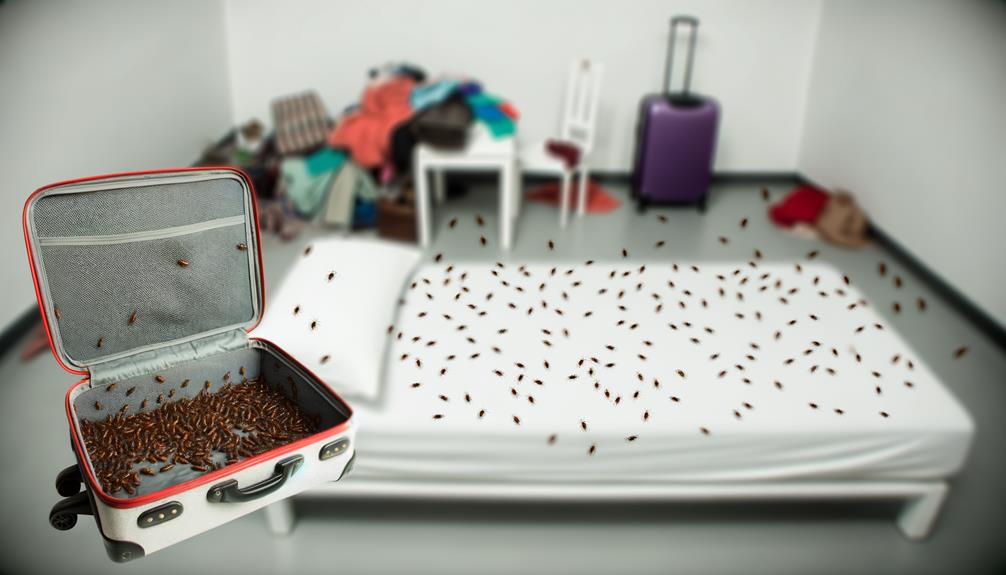
Understanding the proper use of pesticides is crucial, yet it’s equally important to recognize how certain behaviours can inadvertently spread bed bug infestations. When you’re travelling, adopting specific precautions can significantly reduce the risk of transporting these pests back to your home. Encase your luggage in protective covers and meticulously inspect hotel rooms upon arrival. It’s not just about checking the bed; scrutinising furniture, curtains, and even behind-wall art. You’re not being paranoid; you’re being proactive in preventing an invasion that can disrupt your sanctuary.
Moreover, the allure of second-hand furniture can sometimes blind you to the risks it poses. Bed bugs are notorious for hitching rides on sofas, chairs, and mattresses. Before introducing any second-hand item into your home, conduct a thorough examination. Look for tiny, dark spots or live insects, especially in crevices and underneath. This vigilance is not just about protecting your space; it’s about ensuring you’re not contributing to the wider spread of these pests.
Overlooking Professional Help
Attempting to tackle a bed bug infestation without professional assistance can exacerbate the problem, leading to a more widespread and challenging eradication process. When you’re facing an invasion of these persistent pests, it’s natural to weigh your options, especially considering the perceived cost savings of DIY methods. However, this approach overlooks critical self-treatment risks that not only affect the efficacy of eradication but also your sense of security and belonging within your own home.
The scientific community consistently underscores the complexity of bed bug behaviour and resistance mechanisms. These critters have evolved to withstand many over-the-counter pesticides, rendering many self-treatment attempts futile. Moreover, the lack of professional tools and knowledge can lead to incomplete eradication, allowing bed bugs to continue their life cycle unnoticed until a more severe infestation unfolds.
Cost misconceptions often deter individuals from seeking professional help early on. It’s a common misunderstanding that professional extermination is prohibitively expensive. In reality, the cost of repeated self-treatments, coupled with the potential for an escalating infestation, can far exceed the price of a comprehensive professional approach. By embracing expert assistance, you’re not only investing in the immediate resolution but also in the long-term protection of your home and well-being.
You may also enjoy reading this article
Share this Post
